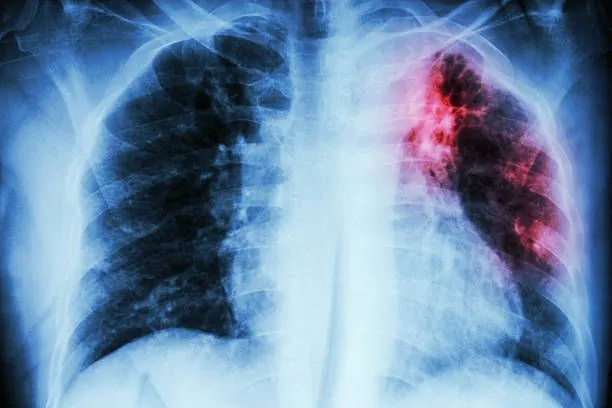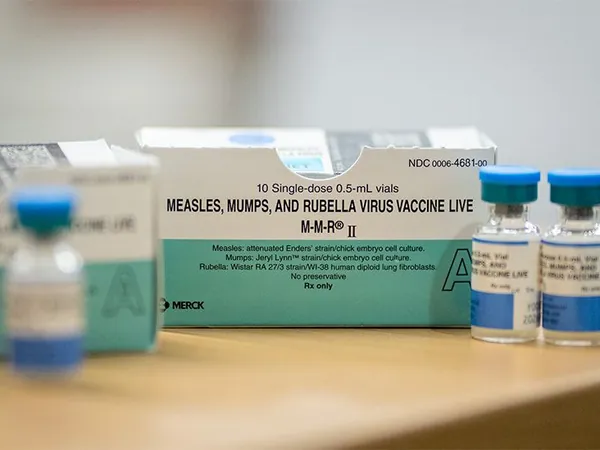
Uganda’s Groundbreaking Project Revolutionizes TB Detection and Treatment in Households: An Inspiring Success Story!
2025-03-24
Author: Ming
Introduction
A pioneering pilot project launched in Uganda from November 2023 to September 2024 has taken significant steps toward improving the detection and treatment of tuberculosis (TB) within household contacts of individuals with pulmonary TB. Enrolling 521 TB patients and 1,913 household contacts across six health facilities, this initiative has garnered international attention for its innovative strategies in fighting TB, as noted in the CDC's Morbidity and Mortality Weekly Report (MMWR) on March 20, 2025.
Challenges in TB Detection
Household contacts of TB patients are particularly vulnerable due to extended exposure, yet the global community continues to struggle with adequate TB diagnosis and preventive treatment (TPT) coverage. In 2023, the World Health Organization reported that only 21% of identified household contacts received TPT, far below the necessary levels for effective control. The Uganda pilot aimed to reverse this trend using home visits, detailed screening, and enhanced support services.
Significant Results
Incredible results emerged from the 1,913 household contacts screened: a staggering 90.9% were evaluated for TB symptoms, with 18.5% reporting symptoms indicative of the disease. Comprehensive clinical evaluations and chest radiography led to the discovery of 80 new TB cases, with 61 cases diagnosed solely through radiographic examinations. This underscores the critical role of chest radiography in identifying asymptomatic TB, revealing that 3.1% of previously asymptomatic household contacts had TB detectable by imaging alone.
Preventive Treatment Success
Preventive treatment was offered to 1,496 eligible household contacts, resulting in an impressive 82.8% initiation rate and a remarkable 95.1% completion rate. Notably, no serious adverse reactions were reported, highlighting the safety and efficacy of short-course preventive regimens, which have shown increased patient adherence when compared to longer treatment durations. Furthermore, the median time from the registration of the index patient to the first home visit was just one day, with preventive treatment initiation occurring within two days—an indication of the project's efficiency.
Alignment with Global Targets
The success of this initiative aligns with global TB control targets, particularly the End TB Strategy, which aims for a 90% reduction in TB incidence by 2030. However, challenges persist, including partial coverage of asymptomatic individuals and the absence of control groups, which somewhat limits the applicability of these findings in broader contexts.
Related Studies
Additionally, this pilot project complements a related study on TB and HIV co-infection in East and North Eastern Uganda, showcasing a treatment success rate of 71.9% among co-infected patients. Conducted from July 2019 to July 2021, this study highlighted the crucial role of consistent sputum monitoring in achieving treatment success, as patients lacking such monitoring at the five-month mark had a significantly lower likelihood of successful outcomes.
Key Takeaways
- Uganda’s initiative identified 80 new TB cases, with 61 diagnosed through chest radiography alone. - The project achieved an 82.8% initiation and 95.1% completion rate for preventive treatment. - A related study emphasizes that inadequate sputum monitoring adversely affects treatment success rates.
Conclusion
These transformative efforts in TB detection and treatment underline the potential for comprehensive screening and immediate intervention strategies to drastically reduce TB incidence and improve health outcomes in high-burden areas. As Uganda demonstrates exemplary progress against TB, such studies pave the way for targeted strategies aimed at ensuring a healthier future for affected populations.





 Brasil (PT)
Brasil (PT)
 Canada (EN)
Canada (EN)
 Chile (ES)
Chile (ES)
 Česko (CS)
Česko (CS)
 대한민국 (KO)
대한민국 (KO)
 España (ES)
España (ES)
 France (FR)
France (FR)
 Hong Kong (EN)
Hong Kong (EN)
 Italia (IT)
Italia (IT)
 日本 (JA)
日本 (JA)
 Magyarország (HU)
Magyarország (HU)
 Norge (NO)
Norge (NO)
 Polska (PL)
Polska (PL)
 Schweiz (DE)
Schweiz (DE)
 Singapore (EN)
Singapore (EN)
 Sverige (SV)
Sverige (SV)
 Suomi (FI)
Suomi (FI)
 Türkiye (TR)
Türkiye (TR)
 الإمارات العربية المتحدة (AR)
الإمارات العربية المتحدة (AR)